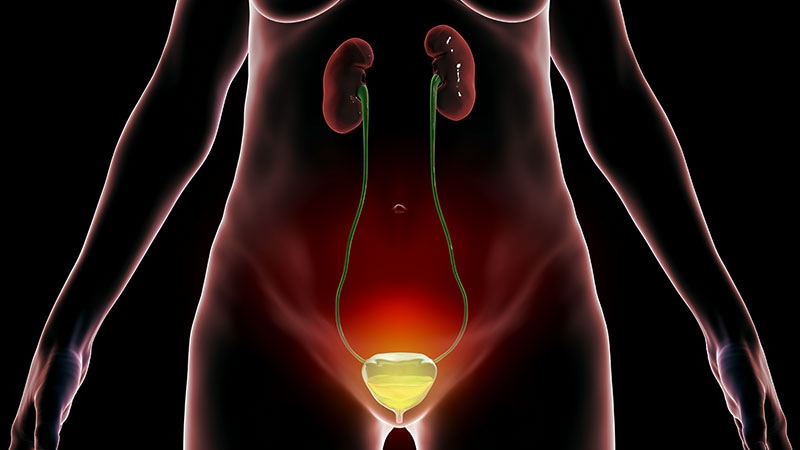Cognitive Therapy Improves Overactive Bladder in Women
Core Concepts
Cognitive therapy intervention enhances quality of life for women with overactive bladder.
Abstract
TOPLINE:
Study in JAMA Network Open shows cognitive behavioral therapy benefits women with overactive bladder.
METHODOLOGY:
79 women with moderate to severe OAB in intervention or control group.
Intervention: 4 sessions of CBT, lifestyle changes, and training.
Outcome measured using health-related quality of life (HRQOL).
TAKEAWAY:
Intervention group showed 12.6 points higher improvement in HRQOL compared to control.
Majority had moderate OAB, with no significant change in pharmacotherapy.
IN PRACTICE:
Urologists may consider cognitive interventions for OAB treatment.
SOURCE:
Authors from Kyoto University Graduate School of Medicine.
LIMITATIONS:
Open-label trial with small sample size and single clinician intervention.
DISCLOSURES:
Study funded by JSPS, authors received grants from various organizations.
Overactive Bladder Aided by Cognitive Therapy
Stats
Participants improved HRQOL score by 12.6 points higher than control group (between-group difference estimate, 12.6 points; 95% CI, 6.6-18.6 points; P < .001).
Average age of participants was 63.5 years, with over 87% having moderate OAB.
Quotes
"Participants who received the intervention on average improved in their HRQOL score by 12.6 points higher than those in the control group."
Key Insights Distilled From
by Lauren at www.medscape.com 03-14-2024
https://www.medscape.com/viewarticle/multimodal-treatment-found-effective-overactive-bladder-2024a10004rq
Deeper Inquiries
How can cognitive therapy be integrated into other medical treatments?
Cognitive therapy can be integrated into other medical treatments for OAB by combining it with pharmacotherapy or other non-pharmacological interventions. For example, cognitive therapy can be used in conjunction with pelvic floor muscle training, bladder training, and lifestyle modifications to provide a comprehensive approach to managing OAB symptoms. By incorporating cognitive therapy into a multidisciplinary treatment plan, healthcare providers can address both the physical and psychological aspects of OAB, leading to improved outcomes for patients.
What are the potential drawbacks of relying solely on cognitive therapy for OAB?
Relying solely on cognitive therapy for OAB may have some drawbacks. One potential limitation is that cognitive therapy may not address the underlying physiological causes of OAB, such as bladder muscle dysfunction or nerve damage. In cases where OAB is primarily due to physical factors, cognitive therapy alone may not be sufficient to effectively manage symptoms. Additionally, some patients may not be receptive to or benefit from cognitive therapy, as individual responses to this type of intervention can vary. Therefore, a comprehensive treatment approach that combines cognitive therapy with other medical interventions may be more effective in addressing the complex nature of OAB.
How can technology be utilized to enhance cognitive therapy outcomes for OAB patients?
Technology can be utilized to enhance cognitive therapy outcomes for OAB patients in several ways. One approach is the development of mobile applications or online platforms that deliver cognitive therapy modules tailored specifically for OAB management. These digital tools can provide patients with access to educational resources, self-help exercises, and symptom tracking features to support their cognitive therapy interventions. Additionally, telehealth services can enable remote cognitive therapy sessions, allowing patients to receive therapy from the comfort of their homes. By leveraging technology, healthcare providers can increase the accessibility and convenience of cognitive therapy for OAB patients, ultimately improving treatment adherence and outcomes.
0
More on Healthcare
